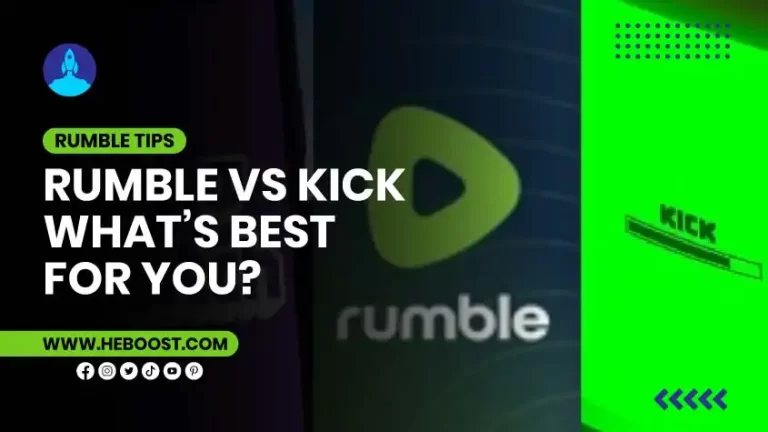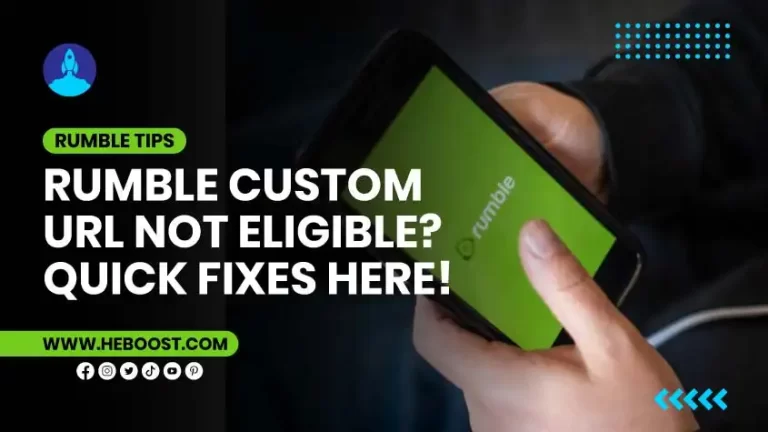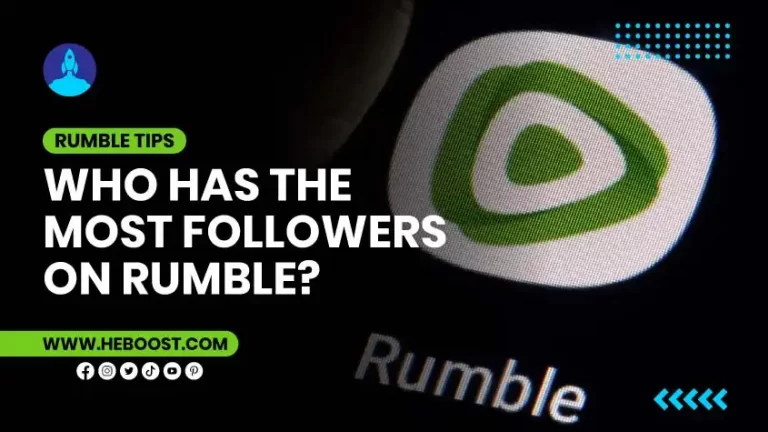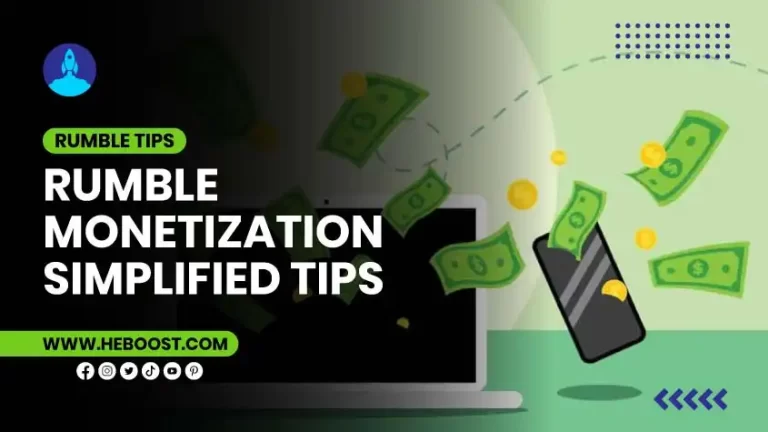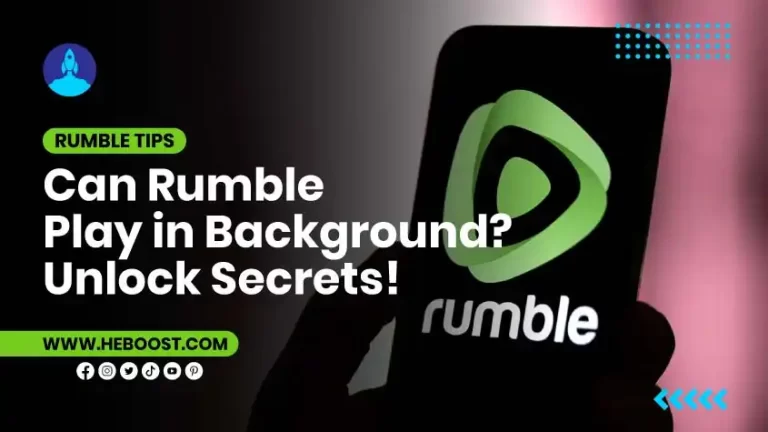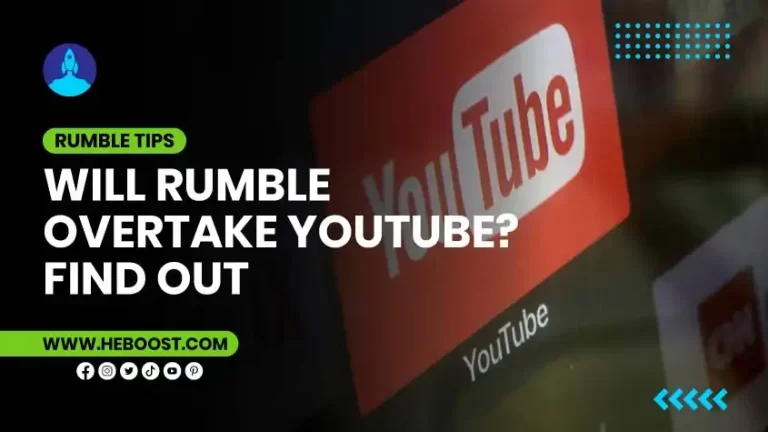Rumble vs YouTube: Picking the Right Platform for You
In the ever-evolving world of video content, two platforms have been locking horns in a spectacular showdown: Rumble and YouTube. Picture this: YouTube, the seasoned champion, a behemoth in the video-sharing universe, and Rumble, the spirited challenger, bringing a fresh perspective to the game. This battle, my friends, is not just about who’s bigger or better; it’s about understanding what each platform offers and how that aligns with your needs as a content creator or a viewer. It’s like choosing between a well-established coffee shop and a new, trendy cafe that just opened up. Both have their charm, but which one will serve your favorite mocha latte just the way you like it?
Now, let’s get down to the nitty-gritty. YouTube, the veteran player, has been around since 2005, shaping and defining the online video landscape. It’s the go-to platform for millions, offering a vast array of content, from educational videos to viral sensations. Rumble, on the other hand, emerged in 2013, positioning itself as a strong alternative with a focus on content freedom and monetization policies that differ from YouTube’s. As we delve into the rumble vs youtube debate, it’s crucial to dissect the nuances of both platforms. It’s not just about where you can upload your next viral cat video; it’s about understanding which platform aligns best with your content creation goals and audience engagement strategies.

Rumble vs YouTube: Understanding the Contenders
YouTube: The Goliath of Video Sharing
Think of YouTube as the digital equivalent of Times Square: bustling, diverse, and constantly buzzing with activity. It’s a global stage where anyone and everyone can share their stories, talents, and knowledge. YouTube has evolved from a simple video-sharing site to a comprehensive platform offering live streaming, a monetization program, interactive features like polls and premieres, and even its subscription service, YouTube Premium. The platform is a melting pot of content, with something for everyone – be it beauty tutorials, gaming walkthroughs, or educational content. Its algorithm is sophisticated, albeit sometimes enigmatic, designed to keep viewers glued to their screens.
Yet, YouTube’s vastness can be a double-edged sword. The platform’s sheer size and competitive landscape can make it challenging for new creators to find their footing. It’s like being a small fish in a big pond – you’ve got to have a killer strategy to get noticed. But fear not! With consistency, creativity, and a knack for understanding YouTube’s SEO (like using keywords such as ‘rumble videos youtube‘ and ‘get a rumble of views boost your youtube‘), you can carve out your own space in this digital metropolis.
Recommended Reads: How Does Rumble Work? Detailed Guide for Channel Growth
Rumble: The Spirited Underdog
Rumble enters the ring with a different approach. Think of it as a cozy community park as opposed to YouTube’s bustling cityscape. It’s smaller, sure, but it offers a sense of intimacy and community that’s hard to find in YouTube’s vast expanses. Rumble’s key selling point is its commitment to content freedom and a more straightforward monetization policy, which can be a breath of fresh air for creators who’ve felt confined by YouTube’s complex rules and algorithms. This platform is particularly appealing to those who feel their content needs to be more valued and restricted elsewhere.
But how is Rumble different from YouTube? Rumble has a less convoluted algorithm, making it easier for new content to be discovered. It’s like walking into a party where everyone gets a chance to be the DJ – your playlist has a better shot at being heard. Additionally, Rumble’s monetization strategy is straightforward and can be more lucrative for some creators, especially those starting. It’s like finding a hidden gem in a sea of stones. The platform doesn’t yet match YouTube’s audience size, but it’s growing steadily, offering a more niche but engaged viewership. For creators looking to establish a presence away from YouTube’s shadow, Rumble presents an intriguing option.
Recommended Reads: How Many Views on Rumble to Get Paid: Maximize Earnings
The Rumble-YouTube Face-Off
Content Freedom and Monetization
When it comes to the battle of Rumble vs YouTube, the topics of content freedom and monetization take center stage. YouTube, with its established guidelines and algorithms, can sometimes feel like a strict teacher with a lot of rules. It has a set of policies that creators must adhere to, and navigating these can be akin to walking through a maze. On the flip side, YouTube’s Partner Program offers creators a chance to earn money through ad revenue, channel memberships, super chats, and more. It’s like a treasure hunt where the more views and subscribers you get, the more treasure you can potentially find.
In contrast, Rumble pitches itself as a platform of liberty for content creators. Its less restrictive environment can feel like a breath of fresh air, especially for creators who’ve felt boxed in by YouTube’s policies. Rumble’s monetization model is straightforward, offering better revenue-sharing opportunities for some creators. It’s akin to a more relaxed teacher who encourages open discussion and rewards students based on participation. This aspect can be particularly appealing if you’re asking, “Why rumble is better than youtube?” for your specific content style and audience.
User Interface and Experience
Navigating YouTube is like riding a bike in a familiar neighborhood; its interface is user-friendly and something most internet users are well-acquainted with. YouTube’s platform is polished, with a focus on personalized recommendations, seamless streaming, and interactive features that keep viewers engaged. It’s like visiting a well-organized library where you can easily find the book you want or even stumble upon one you didn’t know you needed.
Rumble, though growing, is still in the process of refining its user interface. The platform, akin to a quaint bookstore, offers a straightforward and no-frills experience. While it might lack some of the advanced features and sleekness of YouTube, it compensates with its simplicity and ease of use. This is especially relevant when considering which rumble app is like YouTube. While Rumble’s app may not have all the bells and whistles, it provides a functional and easy-to-navigate experience for both content creators and viewers.
Recommended Reads: How Much Rumble Pay for 1000 Views: Surprising Info
Audience and Reach
One of the most crucial aspects to consider in the rumble vs youtube debate is the size and nature of their respective audiences. YouTube, with over two billion logged-in monthly users, is like a bustling international airport, constantly buzzing with people from all corners of the globe. This immense audience offers content creators a vast pool to tap into, increasing the likelihood of higher view counts, broader reach, and diversified engagement. It’s a platform where viral dreams can become a reality, and a broad range of niches can find their audience.
Rumble, while less massive than YouTube, is rapidly growing and carving out its loyal user base. It’s more like a growing regional airport, where the crowd might be smaller. Still, the atmosphere is more intimate, and the passengers are more engaged with their surroundings. This can be advantageous for creators looking to establish a strong connection with a dedicated audience. Additionally, as Rumble continues to grow, the potential for reaching a larger audience increases, raising the question: will Rumble overtake YouTube? While it may take time to happen, the evolving landscape of online video sharing means anything is possible.
A Rumble of Views: Cross-Platform Strategy
Diving into both platforms can be a strategic move for content creators. Utilizing Rumble alongside YouTube can be likened to playing both offense and defense in a sports game. By posting content on Rumble, creators can tap into a new audience and potentially benefit from the platform’s different algorithms and monetization model. This approach can complement their YouTube strategy, where the focus is on reaching a wider audience and leveraging YouTube’s advanced features and analytics.
The concept of “a rumble of views boost your YouTube views” comes into play here. By establishing a presence on both platforms, creators can cross-promote their content, driving traffic from one platform to the other. This strategy can be particularly effective for growing your audience and increasing overall engagement. It’s about not putting all your eggs in one basket but spreading them across multiple baskets to maximize your reach and impact.
Will Rumble Overtake YouTube?
This question, “will Rumble overtake YouTube?“, is akin to asking if the energetic new startup can outpace the established corporate giant. On one hand, YouTube, with its colossal user base and deep-rooted presence in the digital world, seems almost unassailable. It’s like an ocean – vast and seemingly boundless. YouTube has not only a massive audience but also a rich and diverse content library, a highly developed advertising system, and a powerful algorithm that keeps users engaged for hours.
On the other hand, Rumble, with its growing popularity, brings a unique proposition to the table. It’s like a river steadily carving its path through a landscape, gaining momentum as it goes. Rumble’s appeal lies in its straightforward approach to content monetization and its stance on content freedom, which has been attracting a steady stream of creators and viewers. In this David vs Goliath scenario, Rumble may not outright overtake YouTube soon. Still, it’s certainly making waves and capturing a significant niche market.
The dynamics of ‘Rumble vs YouTube‘ are not just about numbers; they’re about trends, user preferences, and market shifts. In the digital age, where user preferences and online behaviors are constantly evolving, a platform like Rumble can disrupt YouTube’s dominance significantly. Think of it like the evolution of social media platforms – there’s always room for a new player to rise and shake things up. So, while the complete overtaking may not be imminent, the impact Rumble is making in the video sharing realm is undeniable.
Why Rumble is Better Than YouTube (Sometimes)
Delving into why Rumble is better than YouTube requires looking at specific scenarios and creator needs. For instance, if you’re a content creator who feels constrained by YouTube’s complex algorithm and content guidelines, Rumble can be a breath of fresh air. This platform offers a simpler, more straightforward approach to content sharing and monetization. It’s like choosing a quiet, scenic backroad over a busy highway; both lead to your destination, but the journey feels different.
Rumble’s appeal also lies in its potential for higher monetization for some content types. Creators who have struggled to monetize their content on YouTube may find Rumble’s revenue-sharing model more favorable. This is particularly appealing for creators in niche categories or those starting who might find it challenging to navigate YouTube’s monetization criteria. It’s like being in a smaller, more focused marketplace where your specific product has a better chance of standing out and being valued.
Furthermore, the question of “how is Rumble different from YouTube” goes beyond just monetization and content freedom. It also encompasses the community and audience engagement. Rumble’s smaller but growing community offers a more intimate and engaged audience, which can be incredibly valuable for creators looking to build a loyal fanbase. In some cases, this close-knit community feel is what makes Rumble a more suitable platform for certain creators.
Rumble vs YouTube Monetization: The Financial Face-Off
In the world of online content creation, monetizing your work is a crucial consideration. The Rumble vs YouTube debate offers two distinct paths for monetization, each with its unique approach and challenges.
YouTube: The Diverse Revenue Avenue
Monetizing on YouTube is akin to navigating a complex financial market. There are various revenue streams: ad revenue, channel memberships, and Super Chats. However, the catch is the platform’s stringent guidelines and the need to please its sophisticated algorithm. To start earning, creators must reach certain thresholds, like 1,000 subscribers and 4,000 watch hours. It’s a challenging environment, demanding not just creativity but also strategic thinking and consistency to ensure a stable income.
Rumble: Straightforward Monetization Model
Rumble, in contrast, offers a more straightforward path to monetization. It’s less about meeting strict criteria or playing to an algorithm and more about the content itself. The platform provides a simpler, more accessible monetization process, making it appealing, especially for those who find YouTube’s barriers too high. It’s a direct and less complex system, but with the trade-off of a smaller audience reach.
Ultimately, the choice between Rumble and YouTube depends on what suits your content style and financial goals. Some creators opt to diversify their presence across both platforms, maximizing their earnings and audience reach. As experts in digital content creation, we’ve observed that successful monetization is about understanding and adapting to your chosen platform’s nuances and, most importantly, maintaining a strong connection with your audience.
The App Showdown: Which Rumble App is Like YouTube?
In the digital ring of video sharing, the app experience is a heavyweight contender. So, when it comes to the showdown of which Rumble app is like YouTube, it’s crucial to compare their mobile experiences. YouTube’s app is like the Swiss Army knife of video apps – versatile, user-friendly, and packed with features. It’s a polished product that reflects years of user feedback and development, offering everything from 4K video playback to background play and a mini-player for multitasking. The app is designed to keep users engaged, with personalized recommendations and an interface that’s as familiar as your favorite pair of jeans.
Rumble’s app, in contrast, feels more like a straightforward tool – simple, easy to use, and without the bells and whistles of YouTube’s app. It focuses on the essentials: watching, uploading, and sharing videos. The interface is clean and uncluttered, making it accessible even for those who aren’t tech-savvy. While it may lack some of the advanced features of YouTube’s app, such as a sophisticated recommendation algorithm or extensive playback options, it provides a no-nonsense platform for those who prefer a more streamlined experience. It’s akin to a cozy, local cafe where the menu is limited, but each item is carefully crafted.
This aspect of the rumble vs youtube debate really boils down to personal preference and needs. Are you looking for a feature-rich experience with all the latest bells and whistles, or do you prefer a straightforward, easy-to-navigate platform? The choice between these two apps mirrors the broader choice between the platforms themselves: a decision between a vast, feature-rich environment and a simpler, more focused space.
Rumble Videos YouTube: Navigating the Cross-Platform Synergy
The phrase “rumble videos youtube” signifies the growing trend of creators leveraging multiple platforms to maximize their reach and impact. In today’s digital landscape, putting all your eggs in one basket is less of a strategy and more of a gamble. Diversifying your presence across platforms like Rumble and YouTube can be a game-changer. It’s like having a diversified investment portfolio – the more spread out your assets, the better your chances of success.
Using Rumble alongside YouTube allows creators to tap into different audiences and benefit from the unique advantages of each platform. For instance, a creator might use YouTube for its vast audience and advanced features, while also taking advantage of Rumble’s content freedom and monetization opportunities. This approach not only increases your visibility but also provides a safety net should one platform change its policies or algorithms unfavorably.
Moreover, the concept of “a rumble of views boost your youtube views” is not just a catchy phrase but a strategic approach. By promoting your YouTube content on Rumble and vice versa, you create a synergy between the platforms. This cross-promotion can lead to a boost in viewership on both sides. It’s like linking two different ecosystems, each benefiting from the other’s strengths. This strategy is especially beneficial for creators looking to expand their audience, test different content types, and build a robust online presence.
Frequently Asked Questions
How can I use Rumble and YouTube together effectively?
Integrating Rumble and YouTube into your content strategy is like playing a well-coordinated duet. Use YouTube for its massive audience and advanced features while leveraging Rumble for its content freedom and potentially better monetization options. Share different types of content on each platform or cross-promote your videos to engage both audiences. It’s about creating a harmonious balance that maximizes your reach and revenue.
Is Rumble’s algorithm different from YouTube’s?
Yes, Rumble’s algorithm is a different beast compared to YouTube’s. While YouTube uses a complex algorithm that factors in viewer behavior, watch time, and user engagement, Rumble’s approach is more straightforward. This difference can be a big deal for content visibility, especially for new creators or those with niche content. It’s like the difference between a bustling city and a small town – each has its rhythm and rules.
How do I know which platform is right for me?
Choosing between Rumble and YouTube is like picking the right tool for a job. Consider your content type, target audience, and monetization goals. If you’re looking for a vast audience and advanced features, YouTube is your go-to. If you prioritize content freedom and a straightforward monetization model, give Rumble a try. Experimenting with both can also be a wise strategy to see what works best for your unique content.
Can I make more money on Rumble than on YouTube?
The potential to earn more on Rumble vs YouTube depends on various factors like your content niche, audience engagement, and monetization strategies. Rumble can offer better revenue opportunities for some creators, especially those with specific content types or who are just starting. However, YouTube’s larger audience and diverse monetization channels also present significant earning potential. Assess both platforms based on your personal content strategy and audience engagement to determine where your efforts might be more lucrative.
Conclusion: The Choice is Yours
In the world of video platforms, choosing between Rumble and YouTube is like picking between a bustling metropolis and a charming small town. Each offers a distinct experience tailored to different needs. YouTube stands as the giant, a vast landscape teeming with diverse content and a massive audience. It’s the go-to for creators seeking wide reach and a plethora of features, akin to navigating a vibrant city filled with endless possibilities.
Rumble, on the flip side, offers a refreshing alternative with its focus on content freedom and a straightforward monetization approach. It’s like a close-knit community where every voice has the chance to be heard, appealing to those seeking a simpler, more direct engagement with their audience.
The decision ultimately rests on what aligns best with your goals as a content creator. Do you thrive in the dynamic, expansive environment of YouTube, or does the focused, uncluttered landscape of Rumble resonate more with you? A blend of both serves your strategy best, leveraging each platform’s unique strengths.
As digital media experts, we believe success lies in how well you connect with your audience, irrespective of the platform. So, pick the path that suits your creative journey best, and let your unique voice shine through. Happy content creation! 🎬🌟

